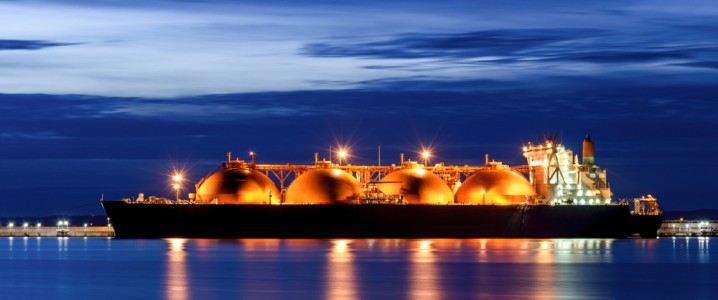
A sanctioned tanker carrying liquefied natural gas (LNG) from a U.S.-sanctioned export project in Russia has reportedly conducted a rare ship-to-ship transfer off the coast of Malaysia. According to satellite images analyzed by Bloomberg News, the Perle tanker, which is under U.S. sanctions, appears to have loaded LNG from the Portovaya LNG small-scale export facility located on the Baltic Sea. This facility is operated by Gazprom, Russia’s state-controlled energy giant, and has been a focal point of sanctions aimed at undermining Russia’s energy sector.
The Portovaya LNG facility and its operator, Gazprom SPG Portovaya Limited Liability Company, were sanctioned by the United States in January 2025, marking one of the final moves by the Biden Administration to impose stringent measures on Russia’s energy exports. The Perle is believed to have loaded LNG from the Portovaya facility in February and has since remained in Asia, navigating the region in search of potential buyers.
Recent analyses indicate that the Perle is currently anchored parallel to another vessel approximately 55 miles east of the Malaysian peninsula. This positioning is characteristic of a ship-to-ship (STS) transfer, a method that allows tankers to exchange cargo at sea without entering port. If confirmed, this incident would represent the first documented instance of Russian LNG being transferred offshore Malaysia.
Russia’s Expanding LNG Efforts
In recent months, Russia has intensified its attempts to sell its sanctioned LNG supplies in Asia. A clear indicator of this effort is the rising exports from the Arctic LNG 2 project to China, occurring despite ongoing sanctions imposed by the U.S., UK, and EU. Data suggests that China has received at least ten LNG cargoes from the Arctic LNG 2 project, as both Beijing and Moscow appear increasingly willing to challenge Western restrictions on Russia’s energy exports.
After facing significant challenges over the past year to secure buyers, Novatek, the company behind the Arctic LNG 2 project, resumed operations in August. This resurgence signals Russia’s determination to capitalize on its LNG resources, raising questions about the effectiveness of sanctions and the potential for further confrontations with the West.
As the global energy landscape evolves, it remains to be seen how this new approach, including the transfer of LNG at sea, will impact international relations and the dynamics of energy supply chains. The actions of the Perle and the ongoing developments in Russian LNG exports underscore a critical moment in the global energy market, with broader implications for energy security and geopolitical stability.







